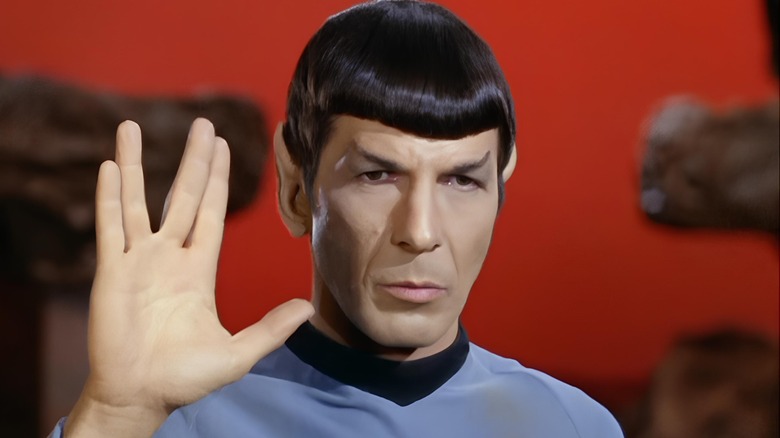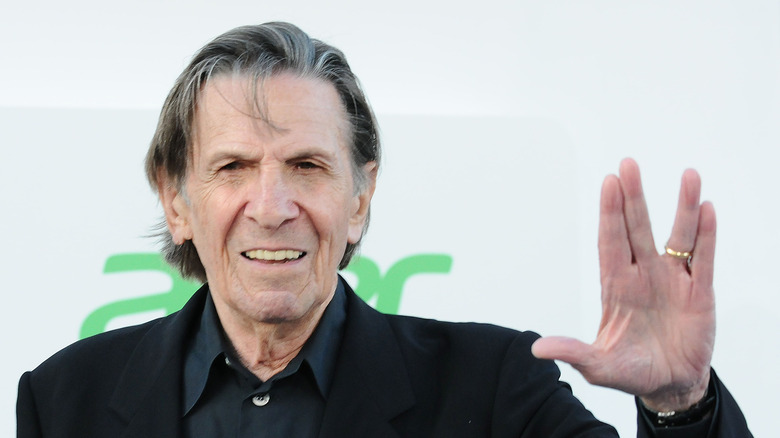What Is Spock's Star Trek Hand Sign Called & What Does It Mean?
There is no more iconic hand gesture in pop culture than the split-fingered greeting used by Spock (Leonard Nimoy) and other Vulcans in "Star Trek." Usually accompanied by the phrase, "Live long, and prosper," the gesture requires splitting one's fingers between the middle and ring finger while extending the thumb, with the palm facing forward. But while many fans have seen it used throughout "Star Trek," many don't know its name, let alone its origins.
Spock's gesture is known as the Vulcan Salute. It was first seen in the episode "Amok Time," the episode of "Star Trek: The Original Series" in which Spock returns to Vulcan to compete in a mating ritual. Though not originally in the script for that episode, Nimoy felt it would be a good way to add more depth to Vulcan culture. "I suggested to the director that there should be some Vulcan thing that Vulcans do when they greet," Nimoy said in an Archive of American Television interview preserved by FoundationINTERVIEWS on YouTube. It was one of many aspects of Vulcan culture improvised by the actor. But the star clarified that the episode's writer, science fiction author Theodore Sturgeon, had come up with the phrase, "Live long, and prosper."
So, that's what the Vulcan Salute means within the universe of "Star Trek." But for Leonard Nimoy, it had a far more profound personal meaning rooted in his Jewish upbringing.
Leonard Nimoy's Vulcan Salute took inspiration from an ancient Jewish tradition
Leonard Nimoy, who played Spock on "Star Trek: The Original Series" and elsewhere, was raised in a Jewish household in Boston, Massachusetts, as the child of Ukrainian immigrants. His parents were observant, particularly his father, who brought his son along to High Holiday services at their local Orthodox synagogue. There, Nimoy witnessed a ritual that would go on to inform his Vulcan Salute.
Synagogue services on major holidays include the Priestly Blessing. Members of the priestly class of Kohanim — in the most simple terms, those with last names like Cohen and derivations thereof — bless the congregation by lifting their hands with the split-fingered gesture. The difference is that, in performing the Priestly Blessing, both hands are raised.
Crucially, members of the congregation are instructed to avert their gaze while the Blessing is recited, as the priests are said to be channeling the divine presence. Congregants often cover their faces with a tallis, a ritual shawl worn during prayer. But young Nimoy was much too curious to remain under the veil, so he would peer out at the Kohanim from under his father's tallis.
As noted on the Star Trek website, Nimoy wrote, "There were a group of five or six men facing the congregation and chanting in passionate shouts of a Hebrew benediction ... My dad said, 'Don't look.' ... I peeked. And when I saw the split-fingered gesture of these men ... I was entranced. I learned to do it because it seemed so magical. It was probably 25 years later that I introduced that gesture as a Vulcan greeting in 'Star Trek' and it has resonated with fans around the world ever since. It gives me great pleasure since it is, after all, a blessing."

